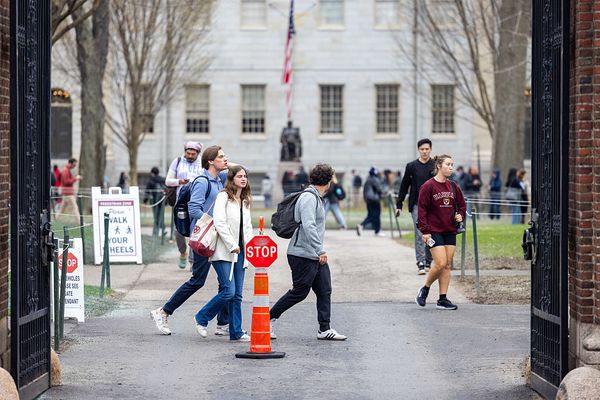Inflation resumed its downward path in April — if ever so slightly — and the white-hot consumer looks to be no more.
Why it matters: Should that continue, it might mean the U.S. economy is back on track for a gradual inflation cooldown even if the process is bumpier than initially thought.
Driving the news: The Personal Consumption Expenditures Price Index, the Fed's preferred gauge, showed a slight deceleration in core inflation, with prices excluding food and energy rising 0.2% in April versus 0.3% in February and March.
- The report also said consumer spending rose a modest 0.2% in April, versus 0.7% in both February and March.
What they're saying: "Disinflation momentum resumed in April," Gregory Daco, chief economist at EY-Parthenon, wrote in a note.
- "Slower consumer spending growth, reduced markups, declining rent inflation and moderating wage growth" will keep inflation cooling, even if there is a "temporary plateau," Daco added.
Yes, but: The inflation relief looks less promising if you go out a couple more decimal points. Core PCE came in at 0.249%, just barely rounding down to 0.2%.
- Over the last three months, core PCE rose at an annualized rate of 3.5%, pulling back from the 4.4% in March.
- But for all of 2024, core inflation is running at a 4.1% annualized pace — well above the Fed's 2% target, and key evidence for why officials will still be cautious about lowering interest rates.
The intrigue: The data also showed a gloomier snapshot of the American consumer. Shoppers pulled back on spending, particularly on a range of goods, including vehicles.
- "Businesses need to prepare for an environment where consumers are not splurging like they were last year," LPL Financial chief economist Jeffrey Roach wrote in a note.
State of play: Personal consumption expenditures fell 0.1% when adjusted for inflation, compared to the 0.4% increase in March.
- Meanwhile, wages did not rise as quickly as inflation did: Real disposable incomes fell 0.1%, the second such decline in three months.
- The personal saving rate — that is, how much income is left after spending — held at 3.6%, a level lower than in pre-pandemic times.







